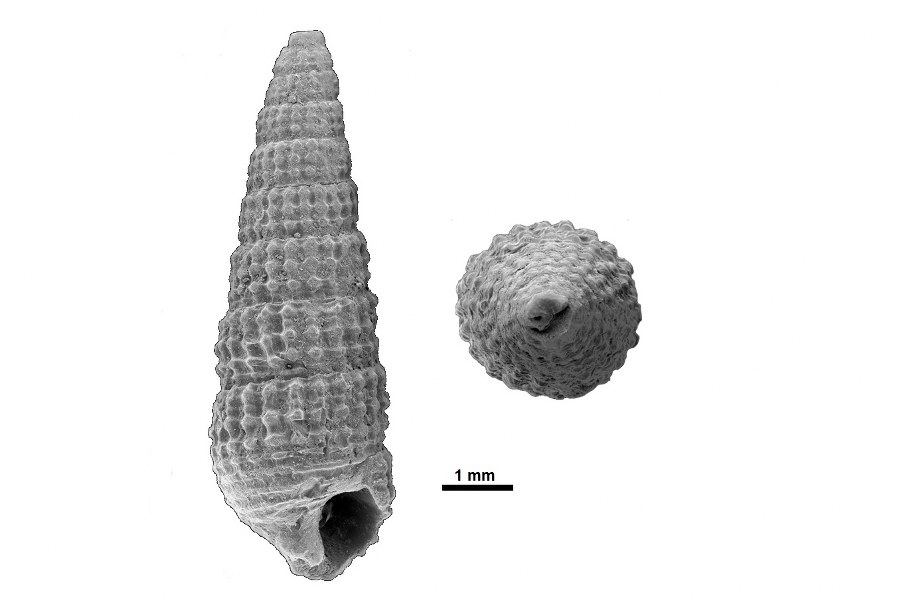Diagnoza
The juvenile whorls widen rapidly, while the adolescent shell grows slowly in width and the shell shape becomes nearly cylindrical. The number of axial ribs increases during ontogeny and there are 35 ribs per whorl on the largest specimens. During ontogeny three additional spiral ribs appear. The secondary ribs are weaker than the primary ones throughout the ontogeny. The intersections of axial ribs and spiral ribs are distinctly noded; the nodes on the primary ribs are stronger, while the nodes on the secondary ribs are weaker. The base of juvenile shells is straight, while it is convex on the larger specimens. The base is ornamented by 4-5 slightly weaker spiral ribs that are devoid of nodes. The rounded aperture has a strong, distinctly oblique anterior channel.
Porównanie
The shell shape and the sculpture of the species under consideration resemble Rhabdocolpus from which it differs mainly in the presence of an anterior channel. Such a channel is present in the species of Rhynchocerithium but the best known species of the latter genus have a multispiral protoconch and more conical shell.
Autekologia
Występowanie geograficzne
Germany, France and Switzerland; in Poland Czarnogłowy and Kłęby (Western Pomerania). Zasięg czasowy
Late Jurassic. Materiały muzealne
Over 100 specimens (BGR, Buchholz, Beckert, GG i ZPAL). Literatura
Gründel, J & Kaim, A. 2006. Shallow-water gastropods from Late Oxfordian sands in Kłęby (Pomerania, Poland). Acta Geologica Polonica 56, 121‒157. Roemer, F.A. 1836. Die Versteinerungen des norddeutschen Oolithen-Gebirges. 218 pp. Hahn’schen Hofbuchhandlung; Hannover. Schmidt, M. 1905. Über Oberen Jura in Pommern. Abhandlungen der Königlich Preußsischen Geologischen Landesanstalt und Bergakademie, Neue Folge, 41, 1-222.
| 
